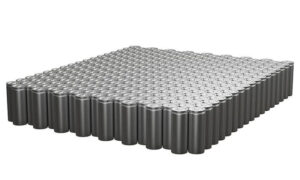As per NITI Aayog, by 2030, 80% of two and three-wheelers, 40% of buses, and 30-70% of cars in India will be electric vehicles. Electric vehicles (EVs) are currently the blue-eyed boys in the global automotive industry since they are being pitched as the future of mobility. Although vehicles running on batteries as a power source isn’t an invention by any means, they have been able to create a worldwide impact only in the last few years. The government of India has undertaken multiple initiatives to promote manufacturing and adoption of e-mobility in India. With support of the government, electric vehicles have started penetrating in the Indian market.
As innovation continues to thrive in the automotive industry, Fiber Lasers have been a tremendous success in automotive production and they’ve been used for a variety of welding and cutting applications. The use of high-power Fiber Lasers in automotive manufacturing has been successful for some time, now, with the trickiest of welding processes now coming onboard to support e-mobility. A critical step in many applications is welding copper, thin foils, and dissimilar materials into a scalable solution that delivers the desired production throughput, quality, and cost requirements.
The design and construction of larger-form-factor cylindrical batteries for electric vehicles promises to deliver several benefits to auto manufacturers and consumers alike. For drivers, these include greater range, more power, faster charging times, a longer lifetime, and better operation in cold weather. Manufacturers can look forward to a more streamlined production and reduced costs.
Some electric vehicle battery designs incorporate current collectors, and these must be joined to the jelly roll with very precise control over weld depth. This is necessary in order to avoid damaging the separators, which could lead to a short circuit within the cell. Similarly, terminal-to-collector welding also requires careful penetration control. It’s particularly important to limit how much heat is pumped into the battery during this operation because it could cause melting or damage to the polymer isolators.
There are several other welding processes involved in making batteries, and again, these vary by manufacturer and design. But the most challenging and sensitive ones all share certain common requirements, including the need for:
Minimal heat affected zone
Accurate penetration depth control
Spatter elimination
High process speed (typically between 200 and 500 mm/sec)
These can be achieved by using Fiber Lasers.
In addition, some important battery joining processes also require the welding of dissimilar metals. Each of these requirements has presented difficulties in the past, and there hasn’t been a single joining technology that could perform well on every single process.
Also, increasing Li-ion battery production volumes to fuel the rising demand for e-mobility and renewable energy puts pressure on manufacturers to improve production yields and throughput to stay competitive.
The good news is that Coherent has developed a new type of laser that has broader applications than anything before. This technology provides an unprecedented degree of control over how laser energy is delivered to the work surface—both in terms of spatial distribution and over time. The key innovation is Adjustable Ring Mode (ARM) technology, a Fibre Laser whose beam consists of a central spot surrounded by another concentric ring of laser light, as opposed to the traditional single-spot output. Most importantly, the power in the centre and ring spots can be independently controlled, and even modulated. The graphic shows how this approach delivers tremendous flexibility in exactly how the laser energy is distributed during welding.
With the growth of e-mobility, fibre lasers are making a significant contribution to technology that is rapidly improving. As a result of fibre laser development, batteries will be more efficient, electric motors will be more efficient, and drive train weight will be reduced. In addition, designers are encouraged to explore new solutions because they are confident that fiber lasers can overcome new and emerging manufacturing challenge
